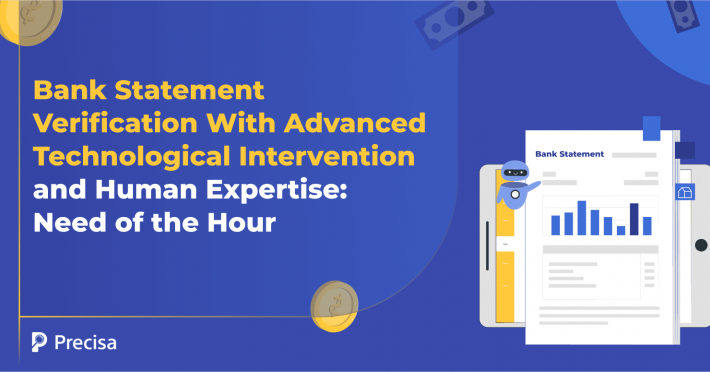Best Practices for Lenders to Prevent Money Laundering

The Reserve Bank of India (RBI) has continually strengthened its laws against money laundering, levying significant fines on non-complaint banks and financial institutions.
However, laundering continues to be a major challenge for India’s financial system, with the nation reportedly losing close to $18 billion each year to such activities.
Digital financial growth, especially in the form of UPI transactions exceeding ₹23.84 lakh crore, has also heightened exposure to money laundering and fraud.
Therefore, lenders must implement robust AML practices to ensure regulatory adherence, avoid financial crimes, and safeguard their reputations.
This blog post will explore how Indian lenders can improve AML practices in line with RBI regulations.
What is Money Laundering?
Money laundering involves concealing the origins of funds obtained through illegal means, thereby making them seem lawful. Offenders employ a range of methods to introduce illegal money into the system, often by taking advantage of gaps in compliance systems.
The process often consists of three phases:
- Placement: Placing illicit funds within legitimate financial channels, usually by cash deposits, trade transactions, or betting.
- Layering: Engaging in sophisticated financial transactions to conceal the audit trail, e.g., wire transfers between accounts or purchasing high-value assets.
- Integration: Bringing back the laundered money into the economy in a manner that looks legal, making it possible for criminals to use it without suspicion.
How Money Laundering Affects Lenders

Indian lenders are extremely vulnerable to money laundering risk due to the growth of digital lending platforms, NBFC transactions, and trade-based laundering. Non-compliance with proper AML can have the following negative repercussions:
- Regulatory Actions: RBI and the FIU charge enormous fines on banks for non-compliance with AML policies. Paytm Payments Bank recently came under the radar for non-adherence to KYC policies.
- Reputational Risks: Non-compliance undermines reputation, resulting in diminished customer and investor confidence. The problem at Yes Bank in 2020 stemmed from its failure to detect dubious transactions, necessitating intervention by the RBI.
- Operational and Financial Risks: Banks that violate AML compliance may face increased costs due to diminished profitability stemming from audits, legal actions, and regulatory oversight.
How to Strengthen Defences Against Money Laundering
The following best practices can enhance compliance, improve fraud detection, and safeguard institutional integrity:
1. Implementing Robust Know Your Customer (KYC) and Customer Due Diligence (CDD) Processes
Robust KYC and CDD measures constitute the primary defence against money laundering. The institutions must ascertain stringent identification, risk profiling, and monitoring of the client’s ongoing activity.
Lenders should implement technology-driven solutions to enhance KYC compliance and reduce fraud risks.
- Validate customer identities with credible documentation.
- Perform background checks and evaluate risk profiles prior to onboarding clients.
- Utilise strengthened due diligence for risky clients, including politically exposed individuals (PEPs) or customers with doubtful financial transactions.
- Roll out biometric authentication, video-based KYC verification, and continuous re-assessment of customer profiles to enhance compliance.
2. Using AI and Machine Learning for Transaction Monitoring
AI can enable banks and other financial institutions to identify suspicious activity better by employing advanced analytics seamlessly. It enhances fraud detection while decreasing false positives, allowing for real-time tracking of high-risk transactions.
- Implement AI-based analytics for the identification of illicit financial activity.
- Detect abnormal transactions in real-time, such as unusual large transfers, repeated international transactions, or swift fund movements across multiple accounts.
- Use ML models to improve detection efficacy and reduce false positives.
3. Intensifying Internal AML Training
Financial institutions must make investments in ongoing training programs to educate employees on evolving money laundering risks and compliance guidelines.
Ongoing training ensures that the teams possess the capacity to identify red flags and respond positively to suspicious transactions.
- Arrange for regular training sessions on AML regulations and red flag indicators.
- Train employees on evolving laundering techniques.
- Incorporate realistic case studies and simulated scenarios in order to stimulate practical understanding.
4. Taking a Risk-Based Strategy
By prioritising risky customers and transactions, this approach permits lenders to use resources efficiently. Thus helping institutions identify and prevent hazards from approaching beforehand.
- Sort clients based on risk factors and apply monitoring plans in line with them.
- Give industries and high-risk customers a closer examination.
- Using transaction data and other sources, routinely update risk profiles for consumers.
5. Increased Cooperation with Regulators and Industry Stakeholders
Collaborative efforts between financial institutions, regulators, and industry associations improve AML. Sharing information on emerging threats can improve overall resilience to money laundering.
- Cooperate with regulatory bodies, industry groups, and financial intelligence units.
- Share fraud intelligence and remain cognisant of new laundering techniques.
- Become members of data-sharing networks and cross-institutional fraud prevention programs.
6. Integrating Automated Compliance Management Tools
Automated compliance tools optimise AML processes for precision and minimising human error. Automation here facilitates real-time monitoring, automated reporting, and regulatory compliance.
- Invest in automated compliance tools to automate reporting and real-time monitoring.
- Use regulatory technology (RegTech) for real-time alerts and case management.
- Pare down the administrative overhead of manual checks for compliance.
7. Periodic Audits and Stress Testing
Periodic audits and stress testing help financial institutions evaluate the suitability of their AML frameworks. Stress testing and periodic audits promote readiness for shifting regulatory requirements and financial crime risks.
- Conduct independent audits to identify weaknesses in compliance frameworks.
- Adopt stress testing in order to gauge preparedness for potential laundering scenarios.
- Conduct retrospective transaction analysis to enhance compliance controls.
Key Takeaway
Money laundering is a pressing problem for lenders, and this requires an aggressive and technology-driven mitigation approach.
By implementing stringent KYC protocols, leveraging AI-driven transaction monitoring, and collaborative industry efforts, lenders can shield their businesses against economic offences.
As a leading cloud-based analytics platform, Precisa provides innovative solutions that enable lenders to detect and prevent money laundering:
- AML Analysis: Deliver comprehensive transaction risk analysis.
- Bank Statement Analysis: Assists lenders in detecting suspicious cash flows.
- Automated Compliance Monitoring: Simplifies regulatory reporting.
- Risk-Based Customer Profiling: Provides greater due diligence for high-risk customers.
- Credit Assessment Tools: Enhances risk management policies and reduces exposure to fraud.
Want to improve your AML compliance program? Get in touch with us today for a free demo.



